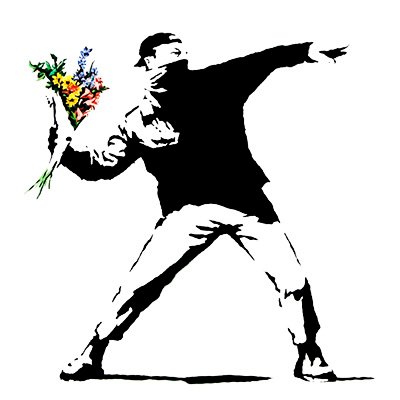The Effectiveness of Non-Violent Resistance

From dealing with enemies overseas to trying to rid yourself of oppressors here at home, what is the most effective method at resisting violence and oppression in order to seek peace and liberty? It might surprise you how effective non-violent resistance can and has been throughout history.

Gandhi and Martin Luther King Jr. are frequently credited with being famous examples of individuals who in the past chose to use civil disobedience and peaceful non-cooperation as a solution to perceived oppression. MLK said that he strongly believed non-violence was the strongest approach and most powerful weapon that oppressed people can use in breaking loose from the bondage of oppression.
“If passive resistance means just passively accepting violence and injustice, if it means cowardice and stagnant passivity, then there is a difference (to non-violent resistance). Because non-violent resistance does resist, it is dynamically active, it is passive physically but it is strongly active spiritually.” - Martin Luther King Jr
Jamila Raqib
Born in war-torn Afghanistan, Raqib gives a presentation on the secret to employing effective non-violent resistance. She says that grew up with a deep sense of suffering and fear because of the ongoing conflict around her and she admits how strongly her experiences in the Middle East have impacted her view on war and conflict in general. When people are oppressed she says that they need a powerful way that will enable them to resist their oppressors and to fight back. She travels the world and educates people on how they can use non-violent struggle in order to conduct conflict.
“I learned that when people have a fundamental issue at stake, for most of them, giving in is not an option.” - Jamila Raqib
Scilla Elworthy
Scilla Elworthy considers herself a peace builder and she is the founder of the Oxford Research Group. Elworthy's presentation seeks to answer the question of how we can deal with extreme violence in the world without having to use force in return. Whether it is bullying at school, abuse from a loved one, or a war between countries, Elworthy discusses the importance of responding with peace and training ourselves not to react or live in fear. Elworthy has spent many years pondering the question of violence in the world and she asserts that very rarely does it work when you use force against force; trying to respond to violence by using even more violence.
“Bullies use violence in three ways: political violence to intimidate, physical violence to terrorize, and mental or emotional violence to undermine,” Scilla Elworthy.
“Anger is like gasoline, when you spray it around and somebody lights a match, you've got an inferno,” - Scilla Elworthy
“[When all we want to do is] argue and blame [others], [it's] totally ineffective. In order to develop a dialogue for change, we have to deal with our anger. It's okay to be angry with the thing-the nuclear weapons in this case-but it is hopeless to be angry with the people. They are human beings just like us and they are doing what they think is best and that's the basis on which we have to talk with them.” - Scilla Elworthy
Erica Chenoweth
Erica Chenoweth admits that her first view of non-violent resistance was that such an approach to violence was “well intentioned but dangerously naive” and she cites examples of non-violent resistance like boycotts, protests, and other forms of mass non-cooperation. Chenoweth mentions that when she was first introduced to the topic of non-violent resistance, she was reluctant to embrace it because she could think of many times where violence appeared to have worked really well (like with the French Revolution) and where non-violence failed (as seen in Tienanmen square) and she didn't think that such an approach could work if you were trying to overthrow a dictator or become a new country.
Chenoweth set out to empirically study non-violent movements and she looked at events that occurred in throughout history which sought to overthrow the government or liberate some sort of territory; she analyzed hundreds of cases. From 1900 to 2006 she says that non-violence campaigns were twice as likely to succeed over violent insurgencies.
“Civil resistance allows people of all different levels of physical ability to participate. So this can include the elderly, people with disabilities, women, children, and anyone who else who wants to.” - Erica Chenoweth
Julia Bacha
For many years Julia Bacha has been studying the work of Israelis and Palestinians who have been trying to end the conflict in that region using only peaceful means. Bacha says that the world, thanks to the media, has largely ignored the peaceful non-violent efforts in the reach seeking change, and she says that it's time the world started paying attention. Bacha's presentation provides video footage of her experiences on the ground.
“The media remains mostly silent on these stories, this silence carries profound consequences for the likelihood that non-violence can grow or even survive in Palestine.” - Julia Bacha
“Violent resistance and non-violent resistance share one very important thing in common. They are both a form of theater, seeking an audience to their cause.” - Julia Bacha
Great bit of reading thank you :)